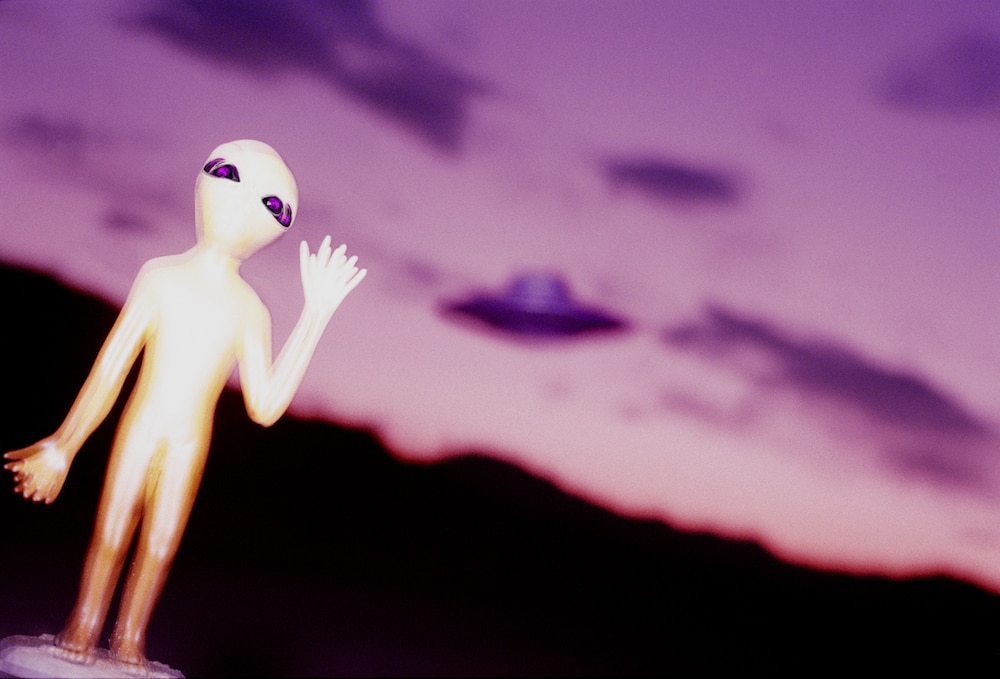Create a free profile to get unlimited access to exclusive videos, sweepstakes, and more!
Future telescopes straight out of sci-fi could directly seek out alien tech
If E.T. isn’t phoning home, maybe we’re just going to have to find his number.

If any extraterrestrial civilization was spying on us, they would be able to tell that Earthlings are obsessed with trying to find intelligent life beyond our planet.
Any evidence of life on another body in space would be something out of sci-fi finally realized. The search for biosignatures — biological signs that something is (or was) alive — keeps scouring Mars and will head to Europa and Titan relatively soon. However, if there really are aliens who have enough brains to build an entire civilization, they might be sending off signs of their existence without even knowing it. Those would be technosignatures.
SETI (Search for ExtraTerrestrial Intelligence) investigators keep trying to capture every signal that might be suspicious. Unfortunately, most of these have turned out to be radio and other signals spewed out by cosmic phenomena such as black hole mergers or neutron stars, among other things. Some were signals from tech on Earth that hit a hypersensitive antenna the wrong way. Researcher Jacob Haqq-Misra of NexSS (Nexus for Exoplanet Systems), who led a study recently posted to the preprint server arXiv, has other ideas on what to look for.
“A mission like LUVOIR could detect detect laser signals and pollution such as NO2,” he told SYFY WIRE. “Large ground-based telescopes like the Giant Magellan Telescope and the Thirty Meter Telescope could enable us to find Earth-sized planets and analyze their atmospheres.”
LUVOIR, or Large Ultraviolet Optical Infrared Surveyor, is a proposed NASA telescope that could pick up traces of alien smog. Nitrogen dioxide is often released by industrial processes here on Earth that involve combustion. While LUVOIR would still be able to detect biosignatures, it would also be able to pick up on unusually high atmospheric NO2 levels by observing what spectra are coming from an exoplanet. If there are aliens out there who think like us, it is possible that their industries are not too different and also have similar by-products.
Next to being able to detect NO2 from how it absorbs visible light, LUVOIR could potentially detect laser beams and other signals that are directly aimed at Earth. Maybe they are being directed at us by (hypothetical) aliens trying to get in touch. After the disappointment of another group of researchers when they searched the galactic center for potential technosignatures, essentially phoning E.T. and getting a dead signal, something like this would be unbelievable.
It isn’t just NO2. Other industrial pollutants that future SETI missions will be watching out for include chlorofluorocarbons, or CFCs, that might be floating around in an exoplanet’s atmosphere. LIFE, Origins and MIRECLE are mission concepts that could possibly find such molecules. There are also advantages to using huge upcoming ground telescopes here on terra firma.
“The Giant Magellan Telescope (GMT) and the Thirty Meter Telescope (TMT) can search for biosignature gases, like oxygen, that might indicate life, as well as technosignature gases, like NO2, that might indicate technology,” said Haqq-Misra.
Both of these telescopes are ELTs or extremely large telescopes that will open their eyes to the stars in the next decade, and the European Extremely Large Telescope or E-ELT will start skywatching in 2027. The GMT and TMT will take a closer look at exoplanets that have already been discovered by missions such as ESA’s CHEOPS or NASA’s TESS. They will also be looking towards red dwarf stars for orbiting planets that may be habitable — or inhabited.
Red dwarfs are the most common stars out there, but while their dimmer light could mean ideal conditions for life to thrive, even on planets that are rather close, it also means that they are more difficult to see. The GMT and TMT will both be powerful enough to observe red dwarfs and the atmospheres of the planets that orbit them. Far-Infrared Probes (FIRs) are another option. These still exist in theory, but if brought to life, their proposed range for detecting wavelengths would be able to search for mega-technosignatures such as Dyson Spheres, which are powered by stars. Something like this is known as an extraterrestrial artifact.
There could still be false positives. Even though there are more anthropogenic sources for NO2 on Earth than there are natural sources, whether or not that means aliens depends on what is producing it. Haqq-Misra and other scientists looking for elusive extraterrestrial life will need to create computer models to have an idea of what kinds of atmospheres they are seeking and back their observations by doing repeated follow-ups with other searches for alien tech.
“We would ultimately need to convince ourselves that the NO2 — along with whatever other gases are present in the planet's atmosphere — could not have any major sources other than technology,” he said.
If you want to believe, think of this: What are the chances that, in this entire universe, we are the only form of intelligent life for billions and trillions and quadrillions of light-years around? There has to be someone out there.


























